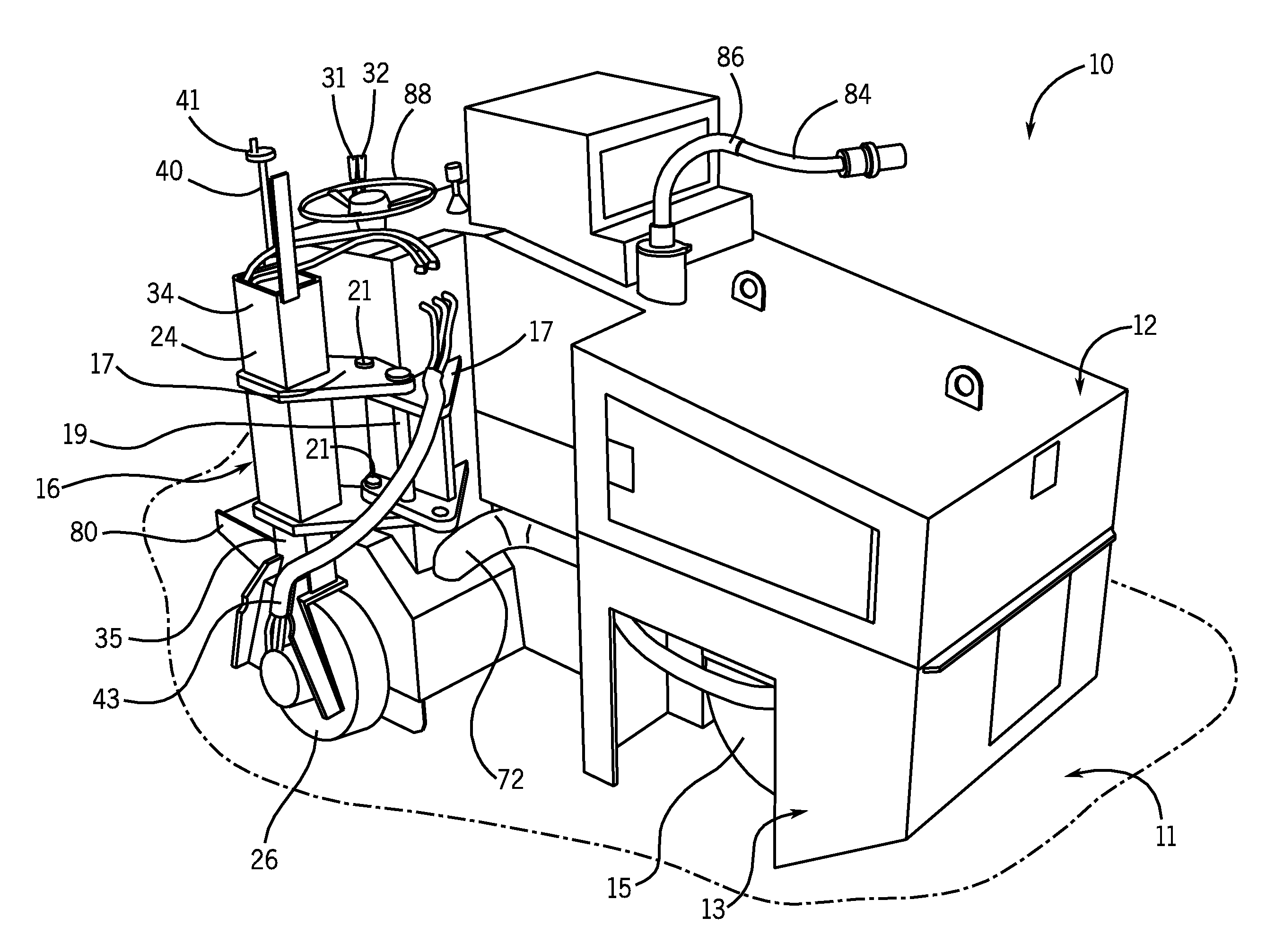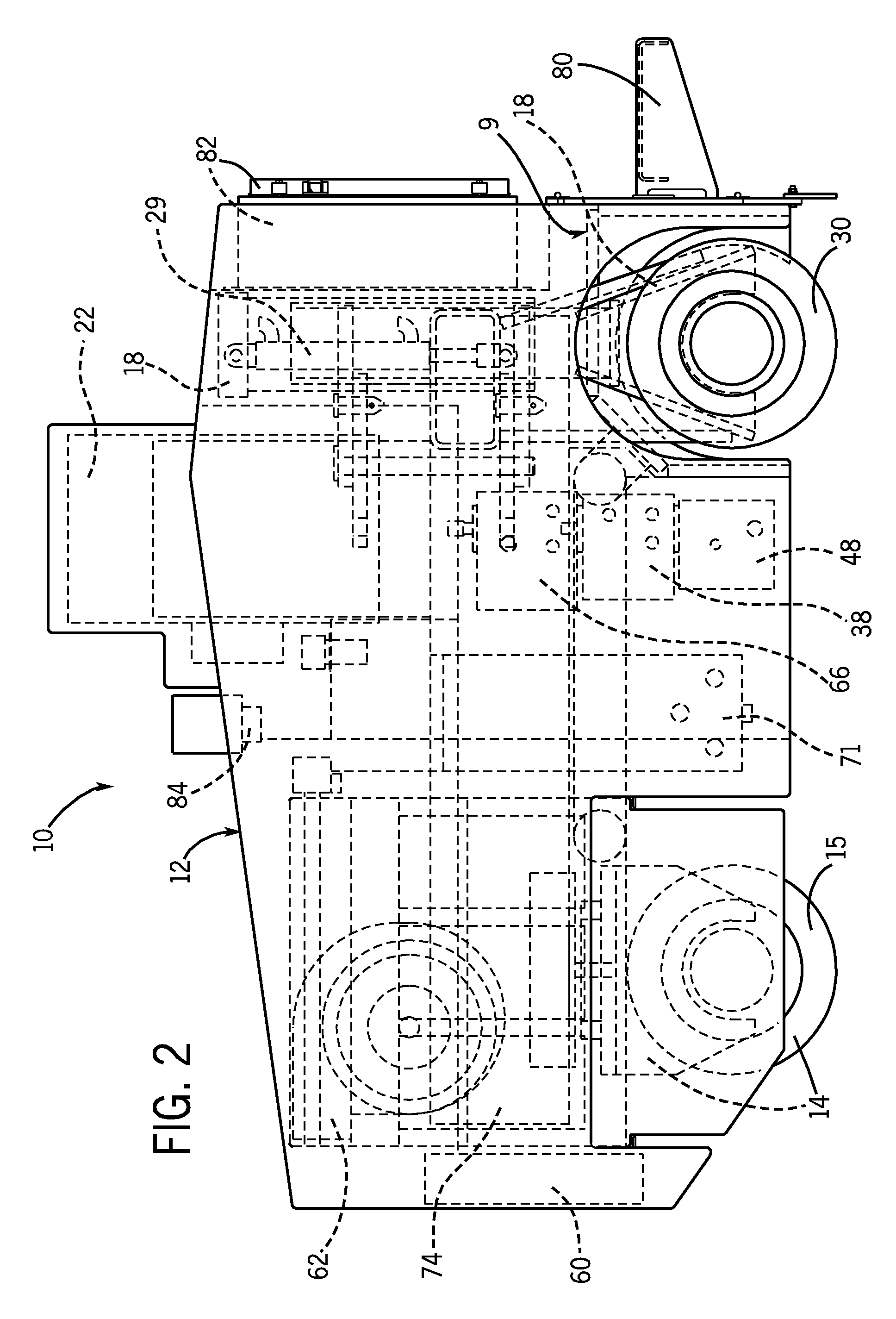Electric milling machine
a technology of electric milling machine and floor milling machine, which is applied in the direction of manufacturing tools, roads, roads, etc., can solve the problems of large machines that cannot fit in many buildings, are difficult, if not impossible to use indoors, and are powerful enough to treat or remove them. to achieve the effect of facilitating the ability to mill surfaces
- Summary
- Abstract
- Description
- Claims
- Application Information
AI Technical Summary
Benefits of technology
Problems solved by technology
Method used
Image
Examples
Embodiment Construction
[0019]Referring now to the drawings, a milling machine 10 constructed according to one embodiment of the present invention includes a housing 12 including a frame 9. The housing 12 is supported by a front wheel assembly 14, a first rear wheel assembly 16, and a second rear wheel assembly 18. The housing 12 contains a milling drum 20 mounted within the housing 12 and extending below the housing 12 for engagement with the flooring surface 11, and an electric motor 22 that powers hydraulic systems for driving the milling drum 20, the first and second rear wheel assemblies 16, 18, and auxiliary systems such as a dust collection system. The housing 12 is ideally a compact housing that allows the milling machine to easily fit inside buildings. In the preferred embodiment, the housing 12 is under 7 feet tall, under 10 feet long, and under 6 feet wide; however, other sizes that allow the milling machine to easily be used indoors are also contemplated by the present invention.
[0020]The first...
PUM
| Property | Measurement | Unit |
|---|---|---|
| width | aaaaa | aaaaa |
| width | aaaaa | aaaaa |
| width | aaaaa | aaaaa |
Abstract
Description
Claims
Application Information
 Login to View More
Login to View More - R&D
- Intellectual Property
- Life Sciences
- Materials
- Tech Scout
- Unparalleled Data Quality
- Higher Quality Content
- 60% Fewer Hallucinations
Browse by: Latest US Patents, China's latest patents, Technical Efficacy Thesaurus, Application Domain, Technology Topic, Popular Technical Reports.
© 2025 PatSnap. All rights reserved.Legal|Privacy policy|Modern Slavery Act Transparency Statement|Sitemap|About US| Contact US: help@patsnap.com



